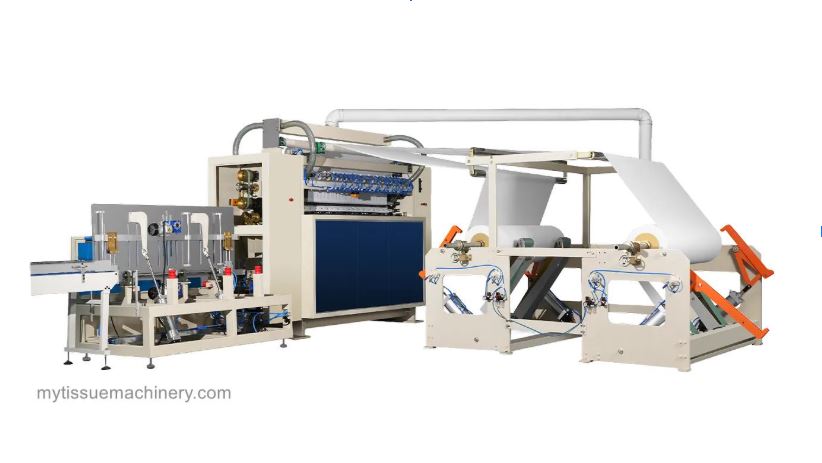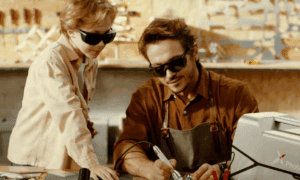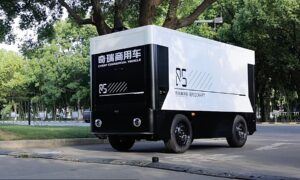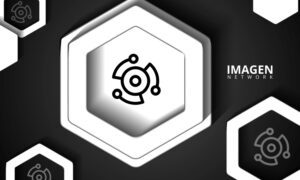For the paper converting industry, selecting the appropriate facial tissue machine determines your production capacity, product quality, efficiency and ultimately profitability. It’s not just about buying a piece of equipment; It’s about engineering the backbone of your production line. This detailed guide will help you navigate the complexities and ensure you make an informed decision that meets the specific needs of your factory.
- Define Your Market and Product Scope
Before evaluating machinery, you must clearly define what you intend to produce and who you intend to sell to. The product specifications drive the machine requirements:
- Ply Count:Are you producing standard 2-ply tissues, budget-friendly single-ply options, or luxurious 3 or 4-ply premium products? Different machines are optimized for handling various paper weights (GSM) and layers.
- Folding Style:The common options are V-fold (interfold, where sheets pull out sequentially) and box-fold (sometimes called C-fold or flat pack). The V-fold interfolder is standard for modern retail boxes and requires specific folding mechanisms.
- Sheet Size and Pack Configuration:Standard box sizes vary globally. Ensure your machine can handle the precise cut-off lengths and widths required for your target market.
- Value-Added Features:Do you need an embossing unit to enhance softness and visual appeal, or an inline printing unit for branding? These require specific machine configurations or modular add-ons.
- Assess Production Capacity and Automation Levels
Your required output dictates the scale and speed of the machinery needed.
- Production Volume:A startup might begin with a machine running at 100-150 meters per minute (mpm), while a large-scale operation might need a high-speed line running over 400 mpm. Overestimating your initial needs can lead to unnecessary capital expenditure and underutilization, while underestimating can bottleneck growth.
- Automation:This is a crucial balancing act between cost and efficiency.
- Semi-automatic lines have lower upfront costs but require more manual labor for tasks like core loading, transfer, and packaging.
- Fully automatic lines integrate the entire process from parent roll loading to finished, wrapped packs ready for a master baler. Brands like Mingyang Machine specialize in highly automated lines that minimize human intervention, leading to consistent product quality, reduced labor costs, and higher overall efficiency (OEE). The initial investment is higher, but the long-term operational savings are significant.
- Evaluate Machine Mechanics and Build Quality
The reliability of your machine directly translates to uptime and maintenance costs. A robust machine is a long-term asset.
- Parent Roll Handling: Look for features like automatic pneumatic jumbo roll loading and tension control systems. Consistent tension control is vital for preventing web breaks and ensuring a smooth run.
- Core Components: Pay attention to the quality of the slitting blades, folding mechanisms, and cutting systems. Durable components reduce downtime and maintenance costs.
- Supplier Reputation: When considering manufacturers, research their track record. Mingyang Machine, for example, has built a reputation for designing robust and durable equipment built to run consistently in demanding factory environments, offering peace of mind to factory owners focused on return on investment.
- Consider Operational Logistics and Total Cost of Ownership (TCO)
The purchase price is just the beginning. The TCO includes operational costs, maintenance, and potential downtime.
- Raw Material Compatibility: Ensure the machine is versatile enough to handle the raw paper you source, whether virgin pulp, recycled stock, or sustainable bamboo fiber. Incompatible machinery leads to excessive waste.
- Energy Efficiency: Modern machines often incorporate energy-saving motors (like servo systems) and optimized heating elements. Lower utility bills directly impact your bottom line.
- Factory Footprint: Verify the physical dimensions of the machine fit your available factory space and layout.
- After-Sales Support & Spare Parts: This is arguably the most critical factor. What happens when the machine breaks down? Choose a supplier who guarantees prompt technical support, remote troubleshooting, and readily available spare parts inventory. A reliable supplier ensures your production line isn’t idle for weeks waiting for a single part.
- Partner with a Reliable Manufacturer
Choosing the right supplier goes beyond technical specs; it’s about establishing a partnership. A reputable manufacturer will offer consultation services to help you design the optimal factory layout and provide comprehensive training for your operators and maintenance staff.
By diligently evaluating these factors and looking into established brands like Mingyang Machine who offer a balance of robust technology and dedicated support, you can select a facial tissue paper machine that is perfectly aligned with your factory’s production goals and positioned for long-term success.



































